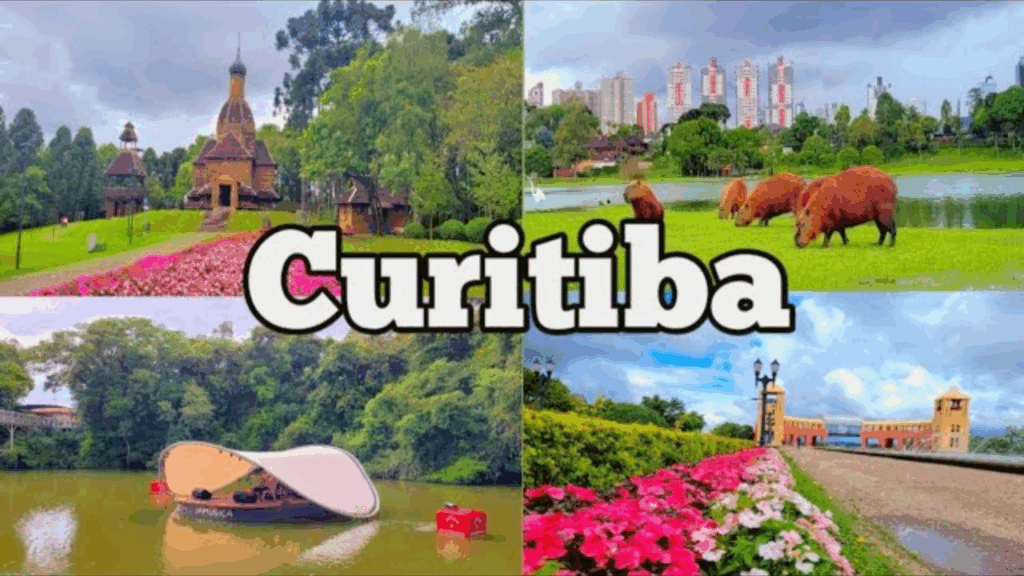
Curitiba, the capital of Paraná, is often celebrated for its innovative urban planning, eco-friendly design, and cultural vibrancy. But beyond its well-known attractions and bustling city center lie hidden neighborhoods that reveal a more authentic side of the city. For travelers seeking genuine experiences, hostels provide the perfect base to explore these areas. By staying in local hostels, visitors not only save money but also immerse themselves in communities that reflect Curitiba’s diverse culture, traditions, and everyday life.
This article explores how hostel stays help travelers discover Curitiba’s hidden neighborhoods, highlighting unique districts, local experiences, and the connections that make each area special.
Why Hostels Are Gateways to Local Life
Unlike hotels, which are often located in commercial zones, hostels are typically nestled in residential or culturally rich neighborhoods. This positioning allows travelers to live alongside locals, engage with community life, and explore places not featured in mainstream guidebooks.
- Local Recommendations: Hostel staff often share insider tips about hidden cafés, street markets, and cultural hotspots.
- Community Vibe: Common areas and events foster interaction between guests and locals, creating cultural exchanges.
- Affordable Stays: Hostels free up budgets, allowing travelers to spend more on local food, art, and experiences.
Hidden Neighborhoods to Explore from Hostels
Curitiba’s neighborhoods are diverse, each offering a different glimpse of the city’s heritage and lifestyle. Hostels act as bridges to these areas, connecting travelers with experiences beyond tourist circuits.
- São Francisco: Known for its bohemian atmosphere, colorful houses, and lively nightlife. Hostel stays here bring travelers close to art galleries, street fairs, and indie music venues.
- Batel: A mix of upscale living and cultural attractions, this neighborhood is ideal for those interested in fashion, gastronomy, and modern nightlife. Hostels in Batel provide access to bars, restaurants, and shopping while keeping a local feel.
- Santa Felicidade: Famous for its Italian heritage, traditional restaurants, and wine culture. Staying in hostels here immerses guests in family-run eateries and cultural festivals.
- Centro Histórico (Historic Center): With cobblestone streets, colonial architecture, and the Largo da Ordem market, hostel guests can explore the roots of Curitiba’s culture.
- Mercês and Juvevê: Quiet, residential neighborhoods where hostels offer a more relaxed environment, perfect for travelers wanting to experience Curitiba like a local.
Cultural Experiences Through Hostel Stays
Hostels enhance neighborhood exploration by curating experiences that reflect local culture.
- Walking Tours: Many hostels organize guided tours through hidden streets, historical buildings, and artisan shops.
- Food Tastings: From pão com bolinho to Italian-inspired pasta dishes, hostel partnerships with local eateries showcase authentic flavors.
- Workshops and Events: Cooking classes, art workshops, and live music nights highlight the cultural richness of the neighborhoods.
- Volunteer Opportunities: Some hostels connect guests with community projects, enabling meaningful engagement.
Benefits of Exploring Neighborhoods via Hostels
- Authenticity: Travelers experience the city through the eyes of locals.
- Accessibility: Hostels are well-connected by Curitiba’s efficient public transportation system.
- Affordability: Staying in lesser-known areas often costs less while offering richer experiences.
- Cultural Exchange: Shared hostel spaces encourage dialogue between locals, staff, and international guests.
Overview Table
| Neighborhood | Hostel Experience | Local Highlights |
|---|---|---|
| São Francisco | Bohemian hostels near nightlife | Art galleries, street fairs, indie music |
| Batel | Trendy hostels with city access | Bars, restaurants, fashion, modern culture |
| Santa Felicidade | Family-style hostels | Italian food, wineries, cultural festivals |
| Centro Histórico | Hostels in colonial buildings | Largo da Ordem market, heritage landmarks |
| Mercês & Juvevê | Residential hostels | Quiet parks, local cafés, authentic living |
| Ecological Corridors Area | Eco-hostels | Green trails, sustainability initiatives |
Why This Matters for Travelers
Exploring Curitiba through hostel stays isn’t just about saving money—it’s about discovering the city’s hidden personality. Each neighborhood reveals a layer of Curitiba’s history, culture, and community spirit. Hostels provide the bridge between visitors and locals, ensuring that travelers leave with experiences that go far deeper than surface-level tourism.
Conclusion
Curitiba’s hidden neighborhoods showcase the city’s unique character, blending cultural heritage, immigrant influences, and modern creativity. Hostels serve as the entry point to these communities, offering affordable stays, authentic encounters, and curated local experiences. Whether it’s savoring Italian food in Santa Felicidade, enjoying street art in São Francisco, or browsing handmade crafts in the historic center, travelers who choose hostels gain a deeper connection to Curitiba. For those seeking meaningful adventures, exploring hidden neighborhoods through hostel stays is the perfect way to discover the soul of the city.
FAQs
Q1: Which Curitiba neighborhood is best for cultural immersion through hostels?
Santa Felicidade offers deep cultural immersion with Italian heritage, traditional food, and festivals.
Q2: Are hostels in Curitiba safe for solo travelers?
Yes, hostels in Curitiba are generally safe and provide friendly, community-oriented environments.
Q3: How do hostels help travelers discover hidden neighborhoods?
They provide local insights, organize tours, and connect guests with authentic community experiences.

